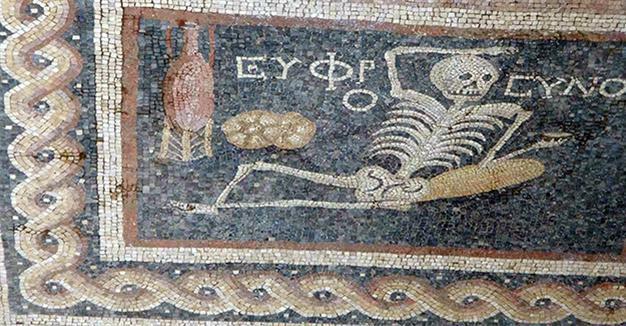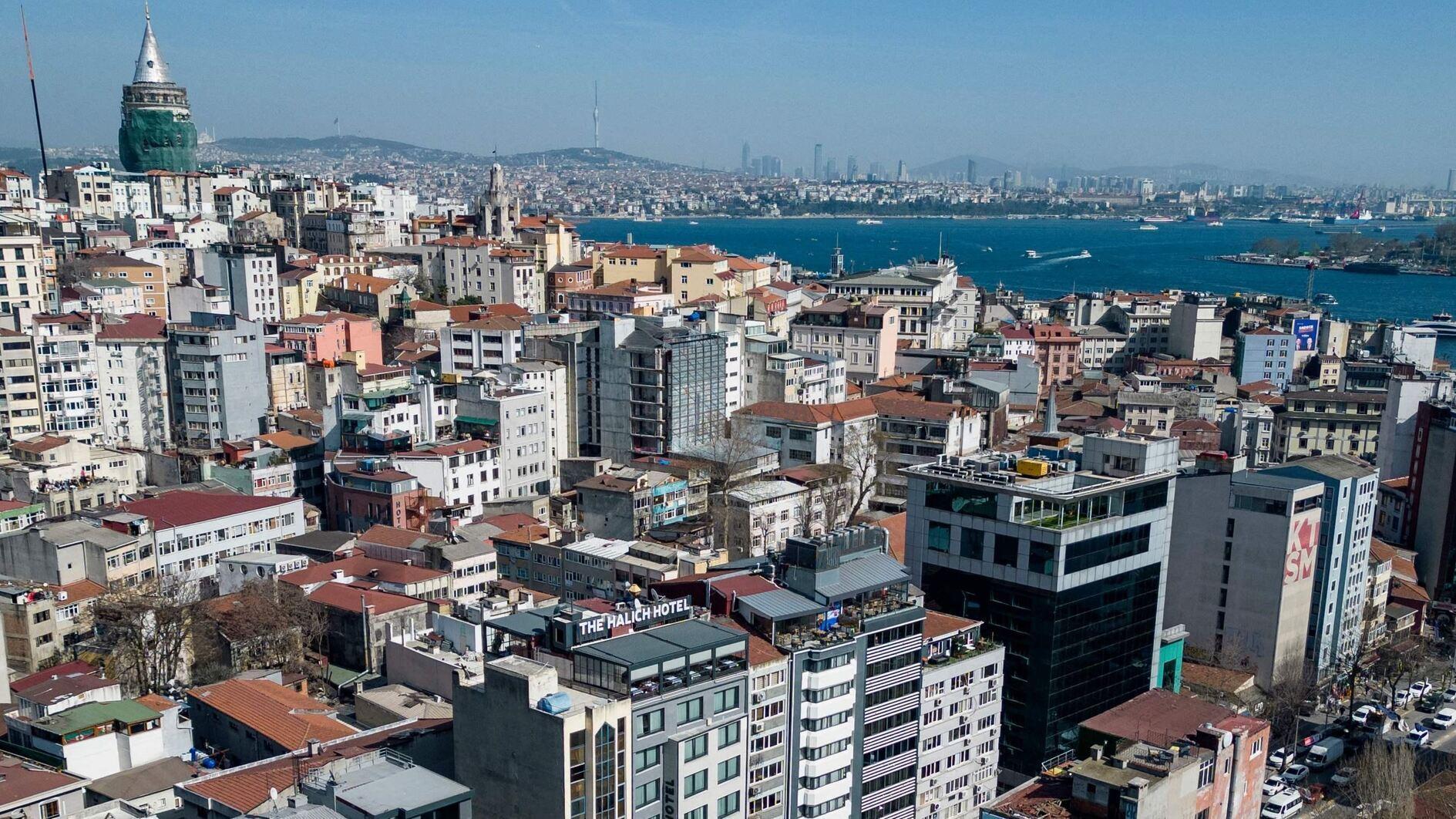Experts pass judgment on meaning of ‘skeleton mosaic’ in Turkey's south
HATAY – Doğan News Agency
 Professors at Mustafa Kemal University in the southern province of Hatay had shed light as to a mysterious message discovered on a mosaic that produced a variety of different interpretations.
Professors at Mustafa Kemal University in the southern province of Hatay had shed light as to a mysterious message discovered on a mosaic that produced a variety of different interpretations.The phrase on the mosaic reads “run to food,” “inconvenient time” and “cheer” but it can also be translated as “be cheerful, live your life,” according to Hatay Archaeology Department Professor Hatice Pamir and Hatay Archaeology Museum Director Nilüfer Sezgin, who have prepared a report on a mosaic.
The unique mosaic, which has been dubbed the “skeleton mosaic” – appropriately so given the prominence it gives to a skeleton – belonged to the dining room of a house from the third century B.C., was unearthed in April in the ancient city of Antiocheia.
A phrase written on the ancient mosaic reportedly read “Be cheerful, live your life,” piquing the interest of experts. But writer and researcher Murat Bardakçı claimed the writing on the mosaic was wrongly interpreted.
“The mosaic says, ‘You get the pleasure of the food you eat hastily with death,’” wrote Bardakçı in daily Habertürk on April 27, while adding that it could be a quotation from a famous person of the era.
The report about the phrase on the mosaic prepared by Pamir and Sezgin was recently published in the magazine of the Koç University Research Institute of Mediterranean Civilizations, Adalya, clarifying the phrase’s meaning.
Thirty-page translation
Speaking about the report, Pamir said the mosaic was made of three pieces and should be evaluated within context where it was found.
“There are three pieces. It reads ‘run to food’ on the figure looking at the shadow clock. The figure behind this one can be interpreted as a warning about inconvenient time. In the third scene, there is a skeleton motif with ‘cheer’ written on it. But a phrase should be interpreted within its context. You cannot translate it as ‘cheer’ only. This is why its translation is 30 pages. This is a scene from a feast. When we look at all three pieces, it expresses the feeling of being cheerful.”
Pamir said such mosaics were called talking mosaics and told stories.
“It gives information about its era, people’s feelings and traditions in this era. If the mosaic only said ‘cheer,’ the meaning would be different. But it is interpreted differently because it has a context. The skeleton motif is a metaphor here. It reads ‘be cheerful’ but we interpret it as an invitation to a feast.”
Pamir said that when the mosaic was first found, it was interpreted as “be cheerful, live your life,” which was not wrong.
“This is an invitation to cheer. With the skeleton motif, the theme of death is also used. The themes of life and death are both there. The translation ‘be cheerful, live your life’ is not wrong,” Pamir said.
















